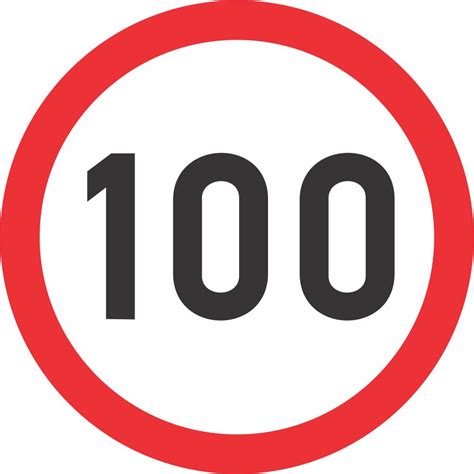What Factors Help Determine A Speed Limit

Determining speed limits is a crucial aspect of road safety and transportation planning. Various factors come into play when establishing speed limits for different road segments, aiming to balance the efficiency of travel with safety considerations. These factors are influenced by both scientific research and real-world data, ensuring that speed limits are set with precision and purpose.
The Science and Data Behind Speed Limit Determination

The process of setting speed limits involves a careful analysis of multiple variables, each contributing to the overall safety and efficiency of the road network. Here’s an in-depth look at some of the key factors that help determine speed limits:
1. Road Type and Design
The type of road plays a fundamental role in speed limit determination. Highways, for instance, often have higher speed limits due to their design, which typically includes multiple lanes, limited access points, and a lack of intersections. In contrast, residential streets, with their frequent crossings and potential for pedestrian activity, warrant lower speed limits to ensure the safety of all road users.
2. Traffic Volume and Composition
The volume and composition of traffic are critical considerations. Heavily trafficked roads, especially those with a mix of vehicle types including cars, trucks, and buses, may require lower speed limits to maintain safety and reduce the risk of accidents. Conversely, roads with lighter traffic may allow for higher speed limits, provided other factors also support this decision.
| Road Type | Speed Limit Range |
|---|---|
| Freeways and Expressways | 65-75 mph (105-120 km/h) |
| Major Arterial Roads | 30-50 mph (50-80 km/h) |
| Residential Streets | 20-30 mph (30-50 km/h) |

Note: These speed limit ranges are general and can vary based on regional regulations and specific road characteristics.
3. Roadside Environment and Land Use
The environment surrounding a road is another critical factor. Roads that pass through densely populated areas or near schools, hospitals, or other sensitive locations often have lower speed limits to protect pedestrians and reduce noise and pollution. In contrast, rural roads with fewer interactions between vehicles and pedestrians may have higher speed limits.
4. Accident History and Safety Records
Historical accident data provides valuable insights for speed limit determination. Roads with a higher incidence of accidents, especially those involving serious injuries or fatalities, may prompt a review of the existing speed limit. Lowering the speed limit can be an effective strategy to improve safety and reduce the likelihood of severe accidents.
5. Speed Limit Harmonization
Harmonizing speed limits across a network of roads is crucial for ensuring consistent travel patterns and minimizing the risk of sudden speed changes. This involves setting speed limits that are similar for roads with comparable characteristics, such as those within the same road classification or with similar roadside environments.
6. Engineering Studies and Research
Engineering studies and research play a significant role in setting speed limits. These studies often involve analyzing road geometry, including curvature, gradients, and visibility, to determine the maximum safe speed for a given road segment. Research also informs the development of guidelines and standards for speed limit determination, ensuring a scientific approach to this critical task.
7. Community and Stakeholder Input
Community engagement and stakeholder input are essential in the speed limit determination process. Local residents, businesses, and other stakeholders often have valuable insights into the specific challenges and opportunities related to a particular road. Their input can help refine speed limits to better reflect the unique characteristics and needs of the community.
8. Enforcement and Compliance
The enforceability of a speed limit is a practical consideration. Speed limits should be set at levels that are realistic and enforceable. Setting a speed limit that is significantly lower than the speed at which most drivers naturally travel can lead to non-compliance and a lack of trust in the system.
9. Economic and Social Factors
Economic and social considerations also play a role in speed limit determination. For example, speed limits on commercial routes may be set to balance the need for efficient freight movement with safety concerns. In urban areas, speed limits might be adjusted to improve traffic flow and reduce congestion, thereby impacting the economic productivity of the region.
10. Climate and Weather Conditions
Climate and weather conditions can impact speed limit determination, particularly in regions with extreme weather events. Roads in areas prone to heavy rain, snow, or ice may have variable speed limits, with limits decreasing during adverse weather to enhance safety.
The Impact of Dynamic Speed Limits

In recent years, the concept of dynamic speed limits has gained traction. This approach involves adjusting speed limits in real-time based on current conditions, such as traffic volume, weather, or accidents. Dynamic speed limits offer the potential to enhance safety and efficiency by providing drivers with more relevant and up-to-date information.
However, implementing dynamic speed limits requires significant infrastructure and technology investments, including advanced sensors, cameras, and variable speed limit signs. Despite these challenges, many transportation agencies are exploring dynamic speed limits as a way to improve road safety and efficiency.
The Future of Speed Limit Determination
As technology advances, the process of determining speed limits is likely to become increasingly sophisticated. With the integration of connected vehicles and smart infrastructure, real-time data on traffic flow, road conditions, and vehicle behavior will become more readily available. This data can inform more dynamic and responsive speed limit adjustments, further enhancing road safety and efficiency.
Furthermore, the increasing adoption of autonomous vehicles may lead to a re-evaluation of speed limit determination. As these vehicles are designed to operate safely at a range of speeds, traditional speed limit concepts may need to be reconsidered to accommodate this new mode of transportation.
Conclusion
Determining speed limits is a complex task that involves a multitude of factors, each contributing to the overall safety and efficiency of our road networks. By considering these factors and staying abreast of technological advancements, transportation agencies can set speed limits that are both scientifically sound and practically enforceable, ultimately contributing to safer roads for all users.
How often are speed limits reviewed and updated?
+Speed limits are typically reviewed periodically, often every few years, to account for changes in traffic patterns, road conditions, and other relevant factors. However, speed limits may also be reviewed and updated following significant events such as accidents or infrastructure improvements.
Are there any universal speed limits that apply worldwide?
+No, speed limits are set by individual countries, states, or local authorities based on their specific road conditions, traffic patterns, and cultural norms. While there may be some similarities in speed limits across regions, there is no single, universal speed limit that applies globally.
How do speed limits impact fuel efficiency and emissions?
+Speed limits can significantly impact fuel efficiency and emissions. Generally, vehicles are most fuel-efficient when traveling at moderate speeds. Higher speeds require more energy, leading to increased fuel consumption and higher emissions. Thus, setting appropriate speed limits can play a role in reducing the environmental impact of transportation.



